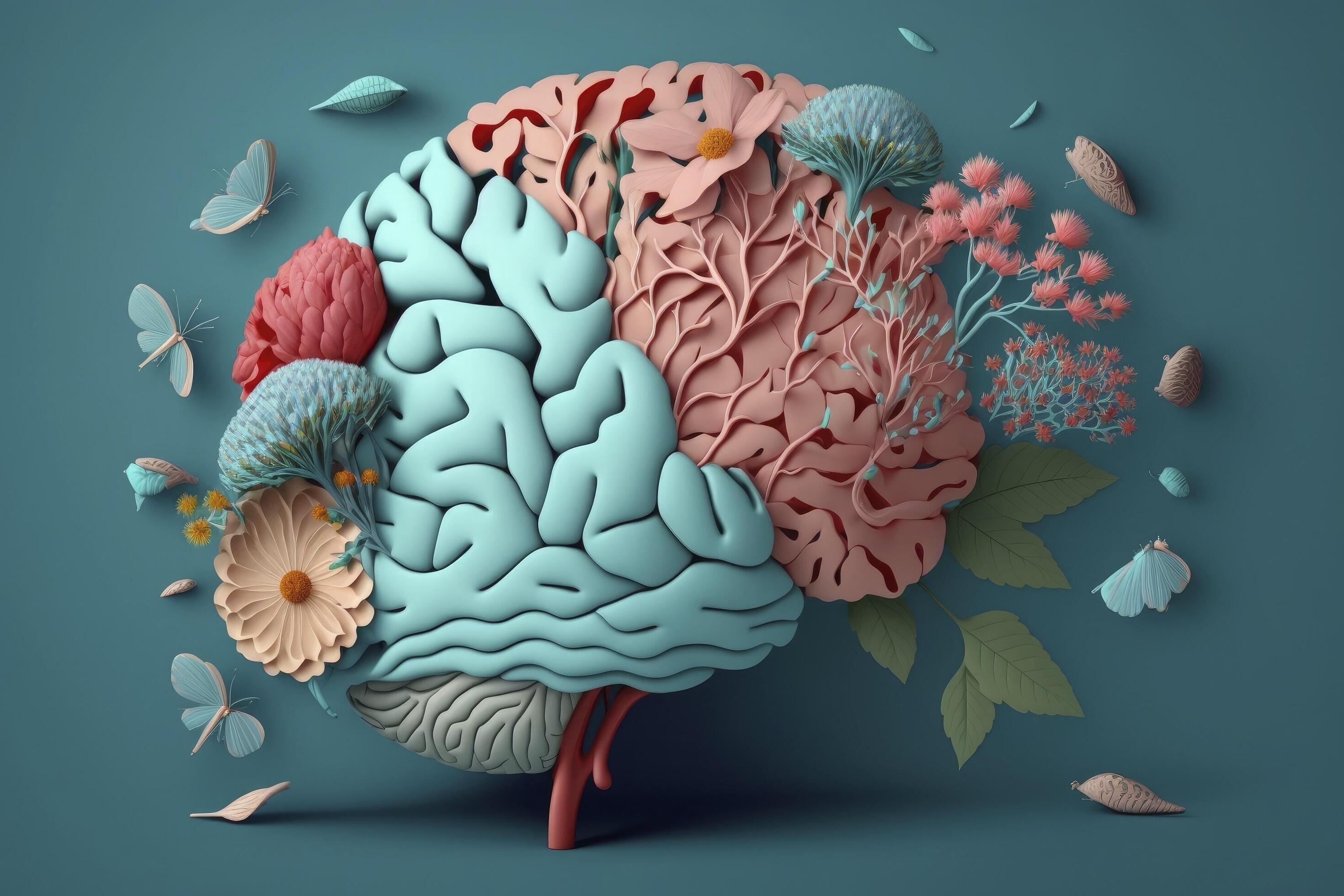Student Mental Health In The Digital Learning Era Tools & Resources That Help

Student Mental Health in the Digital Learning Era: Tools & Resources That Help highlights the crucial importance of mental wellness among students navigating the complexities of online education.
As digital learning becomes increasingly prevalent, understanding the mental health challenges faced by students is essential for fostering a supportive learning environment.
This discussion explores the intricacies of student mental health, from the unique pressures of virtual classrooms to the available resources that can enhance well-being in this digital age.
The rise of digital learning platforms has introduced both opportunities and challenges, significantly impacting students’ mental health.
With the absence of traditional classroom interactions, students may encounter feelings of isolation and stress.
This landscape necessitates a closer examination of the tools and resources that can assist in alleviating these issues, providing essential support for students as they adapt to this new learning paradigm.

Understanding Student Mental Health
The mental health of students is a crucial aspect of their overall well-being and academic success.
In today’s fast-paced and technology-driven educational environment, understanding the complexities of student mental health is imperative.
With the increasing reliance on digital platforms for learning, it is essential to recognize the unique challenges that students face, as well as the resources available to support them.
Mental health issues among students are prevalent and can significantly impact their educational experience.
The digital learning environment, while offering flexibility and accessibility, can also exacerbate feelings of isolation, anxiety, and stress.
Factors such as lack of social interaction, increased screen time, and the pressure to perform academically can contribute to these challenges.
Addressing these mental health concerns is vital for fostering a supportive educational atmosphere.
Common Mental Health Issues Faced by Students
In the context of online learning, several mental health challenges are commonly observed among students.
The following points Artikel key issues that are significant in understanding student mental health in a digital format:
- Anxiety Disorders: Many students experience heightened anxiety due to academic pressures, uncertainty about the future, and the challenges of adapting to online learning formats.
- Depression: Feelings of sadness or hopelessness can intensify in a digital learning environment, particularly when students lack face-to-face interaction and support systems.
- Burnout: The blurring of boundaries between personal and academic life in remote learning can lead to burnout, characterized by emotional, mental, and physical exhaustion.
- Social Isolation: The absence of in-person interactions can leave students feeling disconnected from their peers, resulting in loneliness and decreased motivation.
- Stress: Increased workloads and the pressure to excel in a competitive environment can lead to chronic stress, impacting both mental and physical health.
Factors Contributing to Mental Health Challenges During Online Learning
Several factors play a significant role in exacerbating mental health issues for students engaged in digital learning. Recognizing these factors is crucial for developing effective support strategies. The following elements are commonly identified:
- Increased Screen Time: Extended periods of screen exposure can lead to fatigue, disrupted sleep patterns, and decreased physical activity, negatively impacting mental health.
- Limited Social Interaction: The shift from face-to-face to online communication can hinder the development of relationships, essential for emotional support and a sense of belonging.
- Lack of Structure: The absence of a traditional classroom environment may result in less motivation and increased procrastination, further contributing to stress and anxiety.
- Unequal Access to Resources: Disparities in access to technology and internet connectivity can amplify feelings of inadequacy and isolation among students from different socioeconomic backgrounds.
- Academic Pressure: The expectation to maintain high performance in an online format can create a competitive atmosphere that heightens stress levels.
Impact of Digital Learning on Mental Health
The transition to digital learning has fundamentally altered the educational landscape, presenting both opportunities and challenges for students.
As the reliance on online platforms has grown, it is crucial to examine the implications of this shift on student mental well-being.
Understanding the nuances of this impact will not only facilitate better support systems but also enhance the learning experience for students navigating the digital realm.
Digital learning platforms, while offering flexibility and accessibility, can also contribute to various mental health challenges.
The absence of face-to-face interactions, increased screen time, and the pressures associated with online assessments can lead to feelings of isolation, anxiety, and stress among students.
These platforms often lack the social cues and supportive environments found in traditional classrooms, making it difficult for students to engage meaningfully.
Students may also experience burnout due to the blurred lines between academic and personal life, exacerbated by the constant availability of learning resources and expectations for immediate responsiveness.
Comparison of Traditional Classroom Settings and Digital Learning
The distinctions between traditional classroom environments and digital learning settings are significant, particularly in their impact on student mental health.
Traditional classrooms offer structured social interactions, immediate feedback from educators, and a sense of community, all of which are essential for emotional support.
In contrast, digital learning environments may lack these elements, leading to a more solitary educational experience.
The following points highlight key differences in their impact on mental health:
- Social Interaction: Traditional classrooms facilitate spontaneous interactions among peers, promoting healthy relationships, while online learning often isolates students, contributing to feelings of loneliness.
- Instructor Support: In-person classes allow for immediate feedback and support from teachers, fostering a nurturing environment. Online learning can delay feedback and make it challenging for students to seek help.
- Engagement Levels: The interactive nature of traditional classrooms tends to keep students engaged, whereas online formats may lead to distraction and disengagement due to the myriad of online stimuli.
- Routine and Structure: Students benefit from the structured schedule of a classroom, which can enhance focus and productivity, whereas digital learning may blur these lines, leading to procrastination and disorganization.
Moreover, statistics from recent studies illustrate troubling trends in student mental health during the digital learning era.
According to a survey conducted by the American College Health Association, 63% of college students reported feeling overwhelming anxiety, a rise from 50% in previous years.
Another study published in the Journal of Medical Internet Research found that 71% of students experienced increased levels of stress and anxiety due to the shift to online learning.
“The rise in mental health issues among students during the digital learning era highlights the urgency for adaptive strategies that can bridge the gap between educational needs and mental well-being.”
These statistics indicate a significant correlation between the shift to digital learning and declining mental health among students, necessitating a proactive approach to address these challenges effectively.
Tools for Supporting Mental Health: Student Mental Health In The Digital Learning Era: Tools & Resources That Help

In the digital learning era, the mental health of students is increasingly supported by a variety of innovative tools and applications designed to promote well-being.
These digital resources not only provide accessibility and convenience but also cater specifically to the unique challenges faced by students engaged in online education.
This segment explores the range of these tools, their effectiveness in offering support, and highlights key self-help applications.
Overview of Digital Tools and Applications
Digital tools tailored for student mental health encompass a wide array of platforms that facilitate access to resources, support, and interventions.
These tools include online therapy platforms, mental health apps, and community forums that foster communication among students.
They serve as vital lifelines for students navigating the pressures of academic life, particularly in a digital environment where isolation can be prevalent.
Among the various applications available now are:
- Talkspace: An online therapy platform that connects users with licensed therapists via text, audio, or video messaging, providing flexible options for seeking help.
- BetterHelp: A service that offers professional counseling accessible through various digital formats, ensuring that students can reach out for support anytime, anywhere.
- Calm: A meditation and sleep app designed to reduce anxiety and enhance emotional well-being through guided meditations and relaxation exercises.
- Headspace: Focused on mindfulness and meditation, this app assists students in managing stress and maintaining a balanced mental state.
Effectiveness of Online Therapy and Counseling Services, Student Mental Health in the Digital Learning Era: Tools & Resources That Help
Online therapy and counseling services have emerged as effective alternatives for traditional face-to-face therapies, especially for students who may face barriers in accessing mental health resources.
Studies have shown that these services can lead to significant improvements in mental health outcomes, providing a flexible and confidential environment that encourages students to seek help.
The convenience of being able to communicate with therapists through texting or video calls can alleviate the stigma associated with mental health discussions.
Research indicates that students utilizing online therapy report higher satisfaction levels and a greater sense of accessibility compared to conventional therapy methods, allowing for timely intervention when needed.
Self-Help Apps for Mental Well-Being
Self-help applications have gained popularity as tools for students to manage their mental health proactively.
These apps typically offer resources such as mood tracking, mindfulness exercises, and cognitive-behavioral techniques to help users understand and improve their emotional states.
The following is a selection of notable self-help applications that have received positive feedback for their effectiveness:
- Sanvello: An app focused on stress, anxiety, and depression that offers tools for tracking feelings and provides coping techniques based on cognitive behavioral therapy.
- Woebot: An AI-driven chatbot that engages users in conversations about their mental health, offering evidence-based emotional support and resources.
- MyPossibleSelf: This app promotes well-being through courses designed to help users develop skills to manage their mental health more effectively.
- Daylio: A micro-diary app that allows users to track their moods and activities for better self-awareness and insights into their mental health trends.
Resources for Educators and Institutions
In the evolving landscape of education, the mental health of students has become a paramount concern for educators and institutions.
Recognizing mental health issues early and addressing them effectively can significantly enhance the learning experience and overall student well-being.
This section provides practical resources and strategies for educators to foster a supportive environment.
Guide for Educators to Identify Mental Health Issues
Educators play a crucial role in identifying signs of mental health challenges among their students.
Awareness and training can empower teachers to recognize early warning signs, which may include changes in behavior, academic performance, or social interactions.
Key indicators of mental health issues may include:
- Consistent withdrawal from social interactions or class participation.
- Significant changes in academic performance, such as a drop in grades.
- Frequent absenteeism or tardiness without clear reasons.
- Expressing feelings of hopelessness or worthlessness.
- Visible signs of anxiety or distress during class activities.
Recognizing these signs early can lead to timely interventions, which are essential for students’ mental health.
Strategies to Support Student Mental Health
Schools and universities can implement several strategies to create a conducive environment for mental health.
Establishing a culture of openness and support is key to encouraging students to seek help when needed.
Effective strategies include:
- Creating awareness campaigns that destigmatize mental health issues.
- Offering access to counseling services and mental health resources on campus.
- Implementing peer support programs where students can connect with one another.
- Incorporating mindfulness and stress management techniques into the curriculum.
- Providing training for staff on how to handle mental health crises.
By fostering a supportive environment, educational institutions can help mitigate the impact of mental health challenges on students.
Training Programs for Educators on Mental Health Awareness and First Aid
Training programs focused on mental health awareness equip educators with the necessary skills to support their students effectively.
These programs offer valuable insights into recognizing mental health issues and appropriate responses.
Notable training opportunities include:
- Mental Health First Aid: A program designed to teach educators how to assist someone experiencing a mental health crisis.
- Youth Mental Health First Aid: Tailored specifically for working with young people, this program covers unique challenges faced by students.
- Trauma-Informed Care Training: Educators learn how to create a safe environment for students who have experienced trauma.
- Social-Emotional Learning (SEL): Training focuses on developing students’ emotional intelligence and coping strategies.
These training programs not only enhance educators’ skills but also contribute to a healthier school environment for both students and staff.
Building a Supportive Community
Creating a supportive online community is essential for fostering mental health among students in the digital learning era.
Such a community not only provides a safe space for students to express their feelings but also encourages collaboration and connection.
By promoting understanding and empathy, institutions can help students navigate their challenges and build resilience together.
There are several effective methods to encourage peer support and facilitate connections among students in virtual settings.
These initiatives can significantly contribute to creating an inclusive environment, ensuring that all students feel valued and understood, especially those dealing with mental health issues.
Fostering Peer Support
Establishing peer support networks can greatly enhance the student experience in online learning. Here are a few strategies to build these networks:
- Peer Mentorship Programs: Implementing structured programs where upperclassmen mentor newcomers can ease the transition into online learning. This fosters a sense of belonging and provides newcomers with guidance on navigating academic and social challenges.
- Online Support Groups: Creating dedicated forums or chat groups where students can share their experiences and coping strategies promotes connection. These groups can be moderated by counselors to ensure safety and constructive dialogue.
- Student-Led Initiatives: Encouraging students to organize events like virtual coffee hours or discussion panels can empower them to take charge of their mental health journeys while building community spirit.
Encouraging Connection Through Technology
Utilizing technology effectively can enhance connections among students. The following practices can be implemented:
- Social Media Groups: Establishing private groups on platforms like Facebook or Discord allows students to share experiences, ask for help, and connect socially outside of formal learning environments.
- Interactive Online Platforms: Using platforms that allow for collaborative projects or group work can help students engage with each other academically, fostering relationships based on shared interests and objectives.
- Wellness Challenges: Organizing online wellness challenges, where students participate in activities promoting mental health, can create a sense of community and motivate students to support each other.
Creating an Inclusive Environment
To ensure that all students feel included and supported, initiatives must focus on mental health awareness and accessibility:
- Awareness Campaigns: Implementing campaigns that highlight mental health issues can reduce stigma and encourage students to seek help. These campaigns can include webinars, workshops, and sharing personal stories from students and alumni.
- Resource Accessibility: Ensuring that mental health resources are easily accessible and well-promoted within the online learning environment is critical. This includes making information about counseling services, hotlines, and mental health apps readily available.
- Feedback Mechanisms: Establishing channels for student feedback regarding mental health initiatives allows institutions to adapt and improve their support systems continuously.
“Building a community of support is not just about providing resources; it’s about fostering relationships that empower students to thrive.”
Encouraging Healthy Habits
In the digital learning era, fostering healthy habits is crucial for students to enhance their mental well-being.
Establishing routines that prioritize mental health can significantly influence academic performance and overall quality of life.
By integrating healthy practices into their daily schedules, students can cultivate resilience and improve their emotional stability.
Physical activity and proper nutrition are two fundamental components that play a pivotal role in supporting mental health.
Engaging in regular exercise can reduce anxiety, improve mood, and boost cognitive function.
Similarly, a balanced diet rich in essential nutrients fuels the body and mind, enabling students to perform optimally in their studies.
Healthy Routines for Students
Implementing effective routines can serve as a foundation for better mental health among students. Below are some key practices that can help create a supportive learning environment:
- Regular Exercise: Aim for at least 30 minutes of physical activity most days of the week. This could include walking, cycling, or participating in sports, all of which can elevate mood through the release of endorphins.
- Balanced Nutrition: Prioritize meals that include fruits, vegetables, whole grains, and lean proteins. These foods contribute to sustained energy levels and improved concentration.
- Consistent Sleep Schedule: Strive for 7-9 hours of quality sleep each night. Establishing a bedtime routine can improve sleep hygiene and support cognitive functions.
- Time Management: Develop a structured study schedule that allocates time for breaks and relaxation. This promotes productivity while preventing burnout.
- Social Connections: Maintain regular communication with peers and family. Engaging in social activities, even virtually, can enhance feelings of belonging and support.
Integrating mindfulness and relaxation techniques into daily routines is equally important. These practices not only help in managing stress but also foster a sense of calm and focus.
Mindfulness and Relaxation Techniques
Incorporating mindfulness and relaxation techniques into everyday life can significantly improve students’ mental health. Below are effective methods:
- Mindful Breathing: Practice deep breathing exercises for a few minutes each day. This can help reduce anxiety and enhance concentration.
- Guided Meditation: Utilize apps or online resources for guided meditation sessions. These can help reduce stress and improve overall emotional well-being.
- Journaling: Spend time reflecting on daily experiences and feelings through writing. This practice can facilitate emotional expression and self-awareness.
- Yoga and Stretching: Incorporate yoga or simple stretching exercises into your routine, which can promote relaxation and increase flexibility.
- Digital Detox: Allocate specific times to disconnect from devices. This can help reduce overstimulation and enhance mental clarity.
By adopting these healthy routines, students can foster a nurturing environment conducive to learning, leading to improved mental health and academic success.
Parental and Community Involvement
The role of parents and the community is crucial in promoting and supporting student mental health, especially during the era of digital learning.
With the rapid shift to online education, parents find themselves navigating new challenges that can significantly impact their children’s emotional and psychological well-being.
Understanding how to foster a nurturing environment at home and within the broader community will not only enhance student engagement but also support mental health in these unprecedented times.
Parents can play an essential role in supporting their children’s mental health by actively engaging in their digital learning experiences.
This involvement can manifest in various ways, including establishing healthy routines, creating an appropriate learning environment, and maintaining open lines of communication.
Parents should monitor their children’s engagement with online platforms and ensure that they take regular breaks to mitigate stress and fatigue associated with prolonged screen time.
By modeling positive coping mechanisms and encouraging a balanced lifestyle that includes physical activity and social interaction, parents can help their children navigate the challenges of digital learning effectively.
Community Resources for Family Support
Community resources provide invaluable support for families in promoting student mental health. Local organizations, schools, and health services can offer programs and materials that assist parents in understanding the mental health needs of their children during digital learning.
The importance of these resources can be illustrated through the following:
- Counseling Services: Community mental health organizations often provide counseling services that can help students and parents address emotional and psychological challenges, offering both in-person and virtual sessions.
- Workshops and Seminars: Many communities host workshops aimed at educating parents about digital learning tools, mental health awareness, and effective communication strategies with children.
- Support Groups: Local support groups can create spaces for parents to share experiences and strategies for coping with the demands of digital education, fostering a sense of community solidarity.
- Online Portals: Many educational institutions have developed online portals where parents can access resources related to mental health, including articles, guides, and referral information for professional services.
Leveraging Community Partnerships for Enhanced Support
Building effective partnerships within the community can significantly enhance mental health support for students. Schools, parents, and local organizations should collaborate to create an integrated support system that addresses the multifaceted challenges of digital learning.
To establish these partnerships, consider the following strategies:
- Collaboration with Mental Health Professionals: Schools can engage with local mental health professionals to develop programs that address the specific needs of students and families, ensuring that support is accessible and relevant.
- Engagement with Local Businesses: Partnering with businesses can lead to sponsorship opportunities for mental health initiatives, providing resources for events and programs that promote well-being among students.
- Community Awareness Campaigns: Launching awareness campaigns can educate families about the importance of mental health, reducing stigma and encouraging open discussions about emotional well-being.
- Resource Sharing Initiatives: Schools and community organizations can collaborate to create a centralized resource hub, making it easier for families to access mental health information, workshops, and support services.
By fostering parental involvement and leveraging community resources, we can create a robust support network that promotes student mental health during the digital learning era. The combined efforts of parents, educators, and community members will ensure that students are equipped to handle the challenges they face, leading to a healthier and more supportive educational environment.
Epilogue
In conclusion, addressing student mental health in the digital learning era is paramount for educational institutions, educators, and families alike.
By leveraging innovative tools and fostering supportive communities, we can create an environment where students thrive academically and emotionally.
The insights shared here emphasize the importance of understanding and addressing mental health challenges, ensuring that students receive the necessary support to navigate their academic journeys successfully.
Answers to Common Questions
What are some common mental health issues faced by students in digital learning?
Students commonly experience anxiety, depression, and feelings of isolation due to the lack of in-person interactions and increased screen time.
How can online learning platforms impact student mental health?
Online learning platforms can contribute to mental health challenges by creating feelings of disconnection, increasing stress levels, and reducing opportunities for social interaction.
What types of digital tools are available to support students’ mental well-being?
There are numerous digital tools, including mindfulness apps, online therapy platforms, and self-help resources tailored for student needs.
How can educators identify mental health issues in students?
Educators can look for signs such as changes in academic performance, withdrawal from participation, and indications of distress during online interactions.
What role do parents play in supporting their children’s mental health during digital learning?
Parents can support their children’s mental health by maintaining open communication, encouraging healthy routines, and seeking professional help when needed.






